(v12.13.14)
Art, Architecture and Design
This article spotlights a particular building or some other aspect of Columbus design. I welcome your comments, corrections and additions. Please share your experience and perceptions of these uniquely Columbus projects.
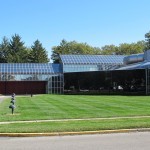 Cummins Health Center
Cummins Health Center
(formerly Cummins Occupational Health Association (COHA))
- Built: 1973
- Address: 605 Cottage Avenue
- Design Architects: Hardy Holzman Pfeiffer Associates – NYC
- Landscaping: Dan Kiley
- General Contractor: Repp and Mundt – Columbus, Indiana
- Honors:
- AIA (American Institute of Architects) Honor Award (1976)
- Bartlett Award for the buildings accessibility to the physically challenged (1976)
Cummins Health Center as originally envisioned was an occupational health center providing health examinations, preventative care and immediate care services to Cummins and 32 other companies and organizations in the community and was known as the Columbus Occupational Health Association or COHA. COHA was a voluntary, not-for-profit association of large and small business and industries joined together to provide comprehensive occupational health services on a cost-sharing basis. Founded in 1970, COHA originally operated out of a converted residence on the site while planning and construction of this building was executed. Cummins assumed the entire capital cost of the building, landscaping and equipment. Later as the health care needs of Cummins continued to grow the center was renamed as Cummins Occupational Health Center and now as simply the Cummins Health Center serving Cummins employees. Most people in town continue to refer to it as COHA.
Hardy Holzman Pfeiffer Associates (HHPA) designed this facility in 1973 as an alternative approach to industrial health care design. The facility is meant to provide occupational and preventive health care services. Hardy Holtzman Pfeiffer were known for bucking convention. In this case they were using common building materials but in very novel ways. This was considered a very cutting edge design at the time. The open concept of the building was designed to be flexible to future expansion needs as well as having an interior design that would be both visually interesting and relaxing for patients. It was felt that allowing patients to have visual access to the various activities within the building both educates and reassures them while minimizing the boredom that usually accompanies medical visits. Patient anxiety is relieved by open placement of routine medical equipment while the exposed mechanical elements provide additional interest and visual variety through the various colors, shapes and textures.
An innovative design for the time, the 3-level building 21,000 square foot building features an abundance of glass with few interior walls. The glass appears dark on the exterior during the day yet appears clear from the inside affording clear views of the surrounding Dan Kiley landscaping. At night the exterior glass curtain walls become transparent allowing views into the interior. The dark glass on the exterior is contrasted by colored architectural elements. A continuous band of angled skylights forms a rectangular area on the roof. The skylight system fills the interior with a continually changing display of light and shade. HHPA considered this use of natural light to be as important an element of design as the steel and concrete. The exterior was designed to exhibit a sophisticated design with the side facing Cottage Avenue having a extremely low-profile for a three level building so as not to overwhelm the small homes across the street.
On the interior, the exposed mechanical system elements (plumbing pipes, heating and ventilation ducts etc.) as well as the structural steel girders are exposed and brightly colored contrasting with the polished metallic walls and southern pine wood flooring providing intense visual impact to the open concept building. The interior is designed around a system of open, semi-open (walls but no ceilings) and closed spaces (walls and ceilings when complete privacy is needed). The interior is defined by 2 overlapping geometric grids. The privately configured spaces are set around the perimeter. The more public spaces are set towards the center with the waiting rooms set up as small circular pods at the very heart of the large central space. A gently-sloping ramp system connects the three levels of the circular and very colorful interior. A direct system of staircases allows quick access to the more private areas of the building.
The facility opened on Feb 11, 1974. COHA won a 1976 honor award from the American Institute of Architects (AIA). The AIA cited the design for how it “exposes routine medical functions to both patient and technician which relieves the tedium of clinical work and the anxiety of patients.” COHA also won a 1976 Bartlett Award from the Presidents Committee for the Handicapped and the AIA. The Bartlett award recognizes buildings that are especially accessible to the physically challenged.
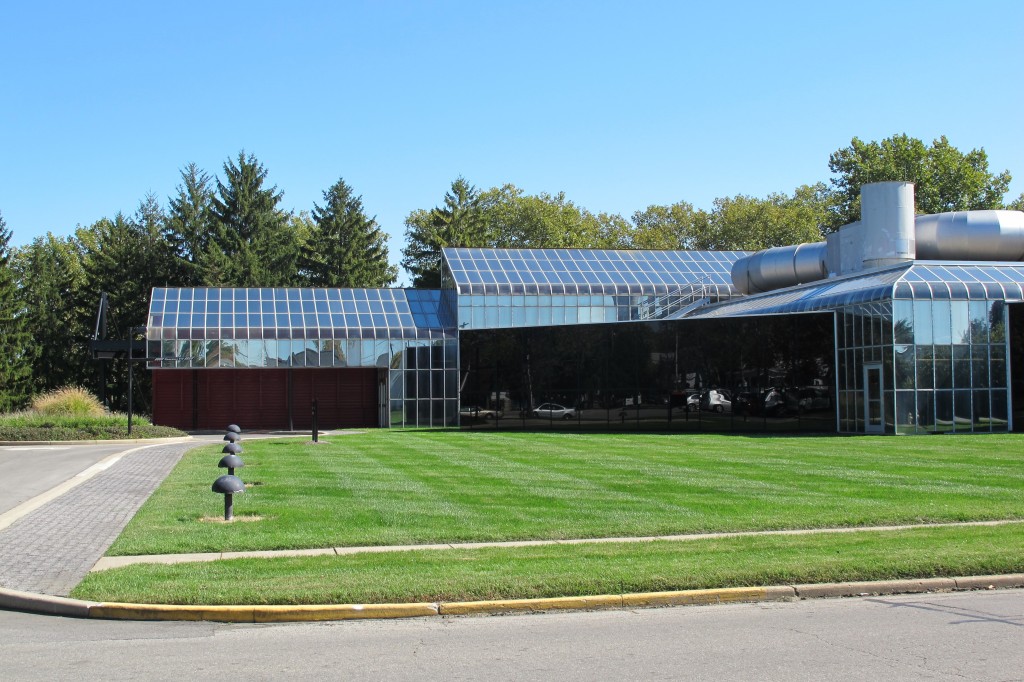 Side of building facing residential Cottage Avenue (presents a low profile for a 3 level building)
Side of building facing residential Cottage Avenue (presents a low profile for a 3 level building)
(photo by Ricky Berkey)
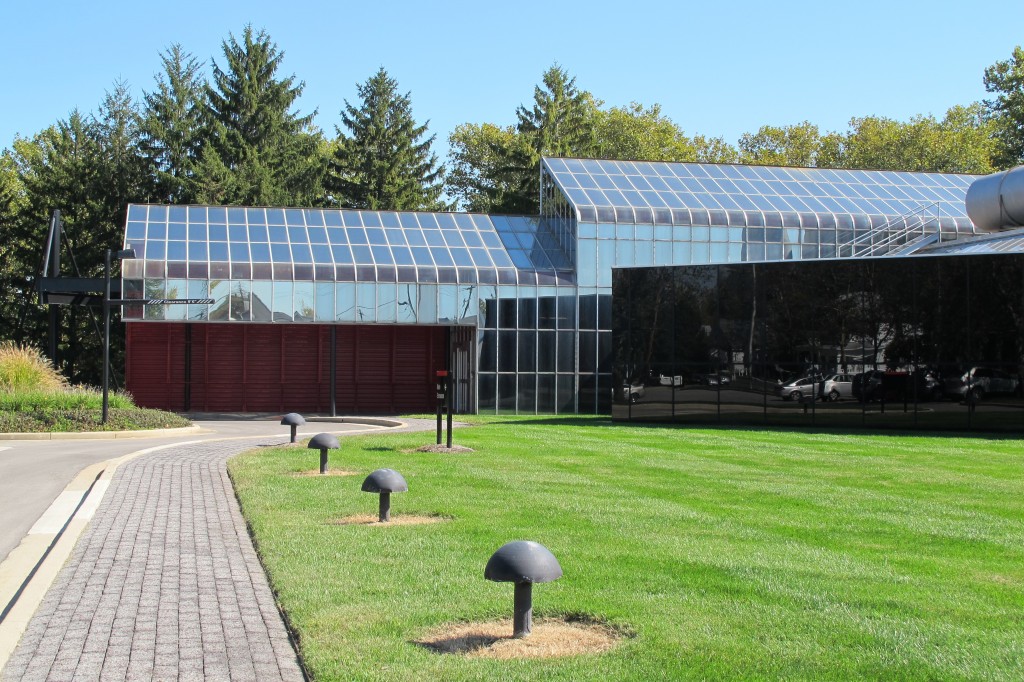 Main entrance
Main entrance
(photo by Ricky Berkey)
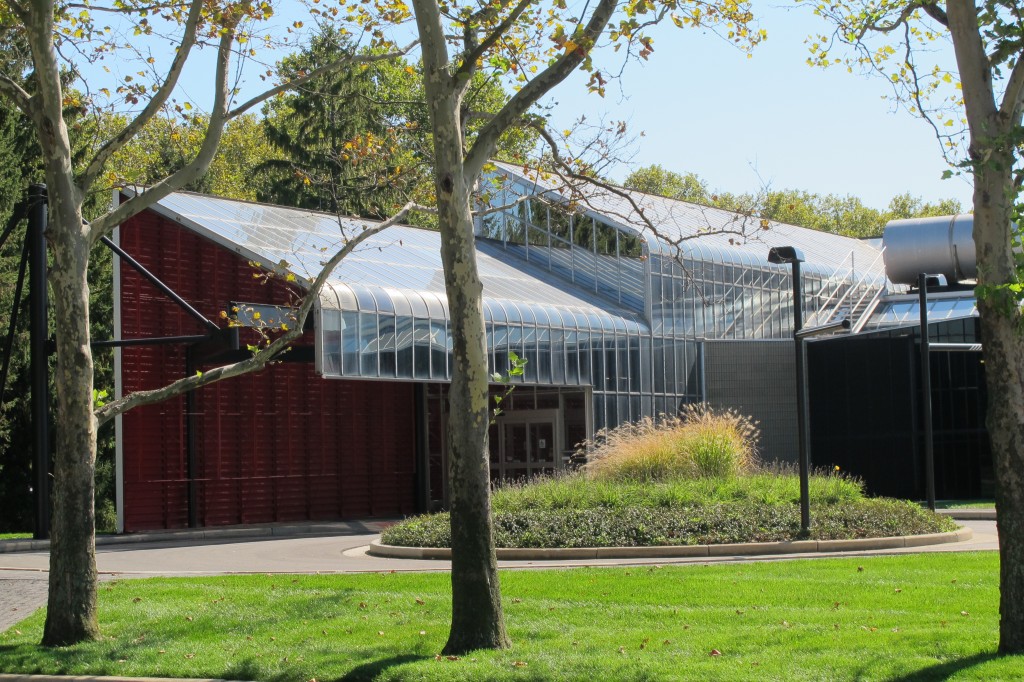 Main Entrance
Main Entrance
(photo by Ricky Berkey)
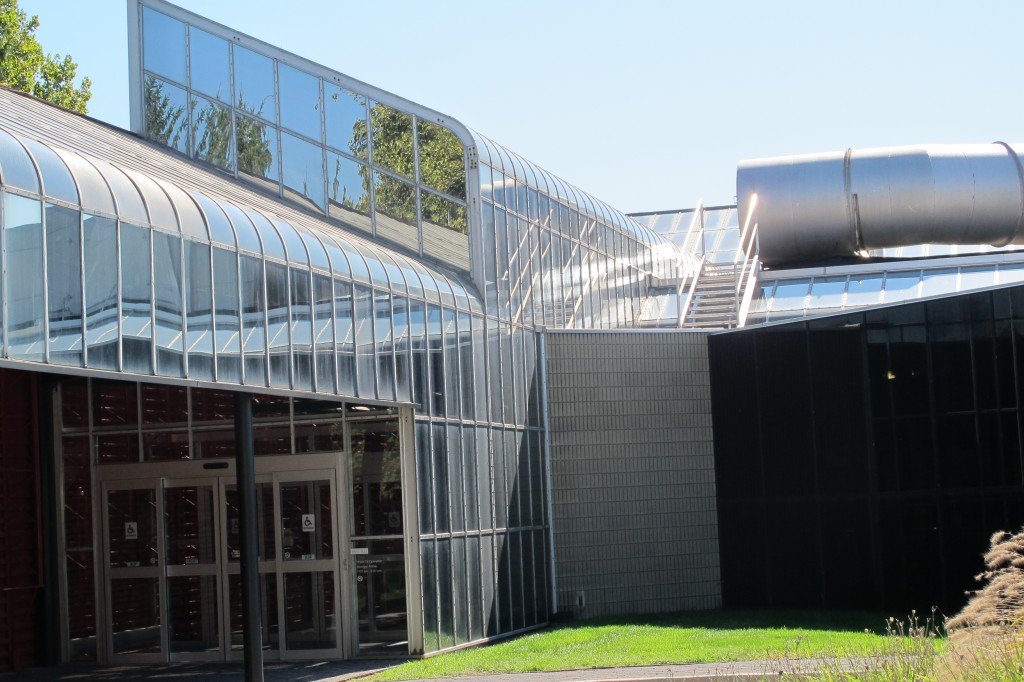 Closeup of main entry and roofline
Closeup of main entry and roofline
(photo by Ricky Berkey)
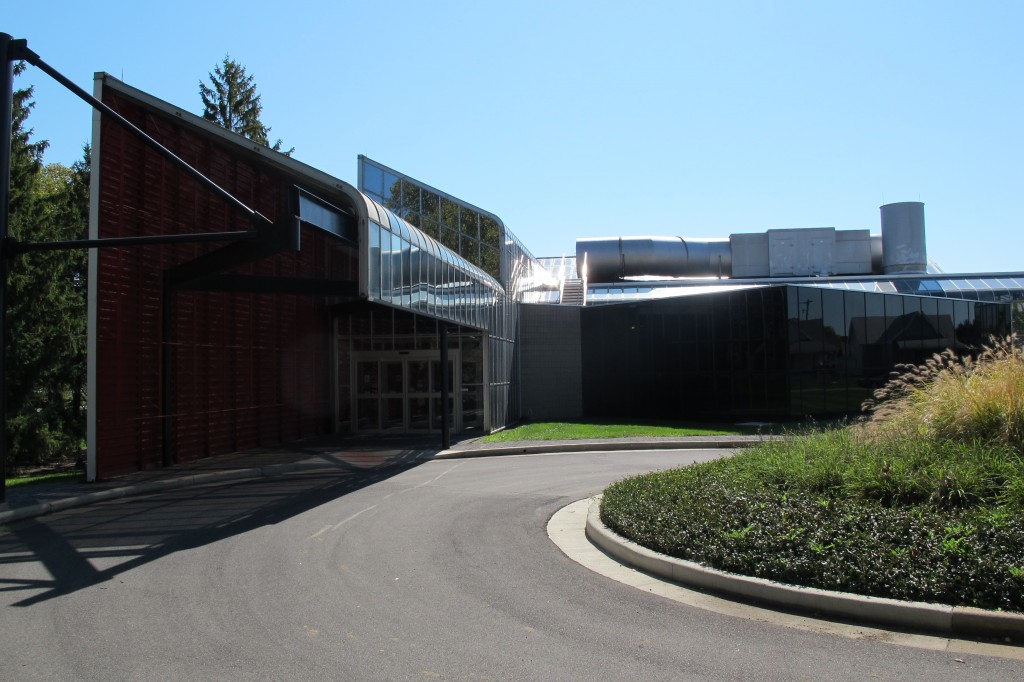 Main entrance
Main entrance
(photo by Ricky Berkey)
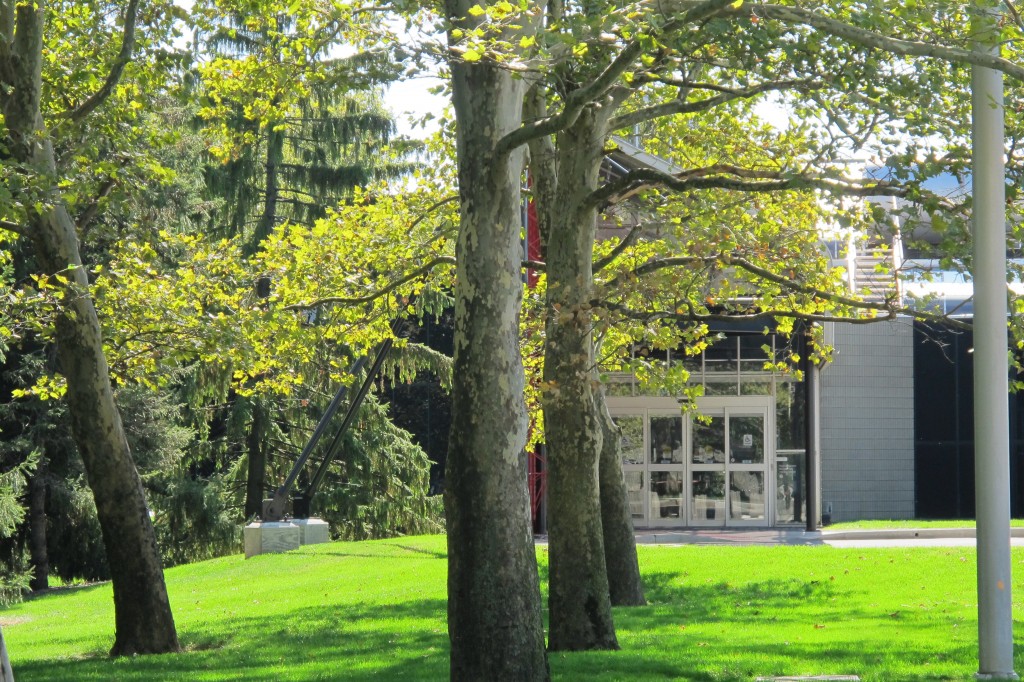 Main entrance
Main entrance
(photo by Ricky Berkey)
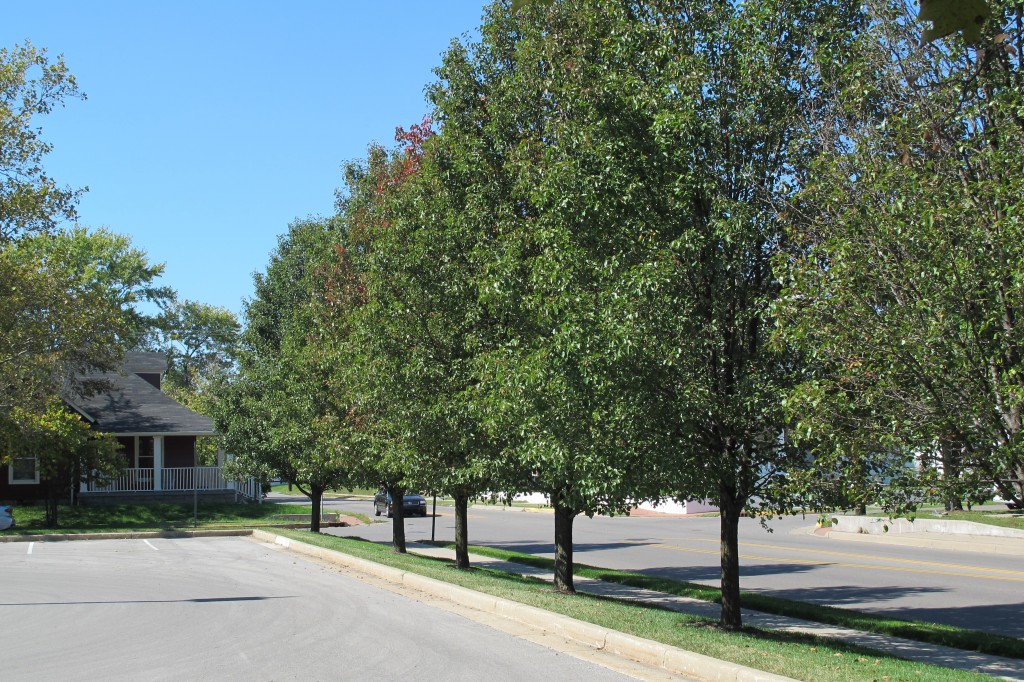 Landscaping along residential side
Landscaping along residential side
(photo by Ricky Berkey)
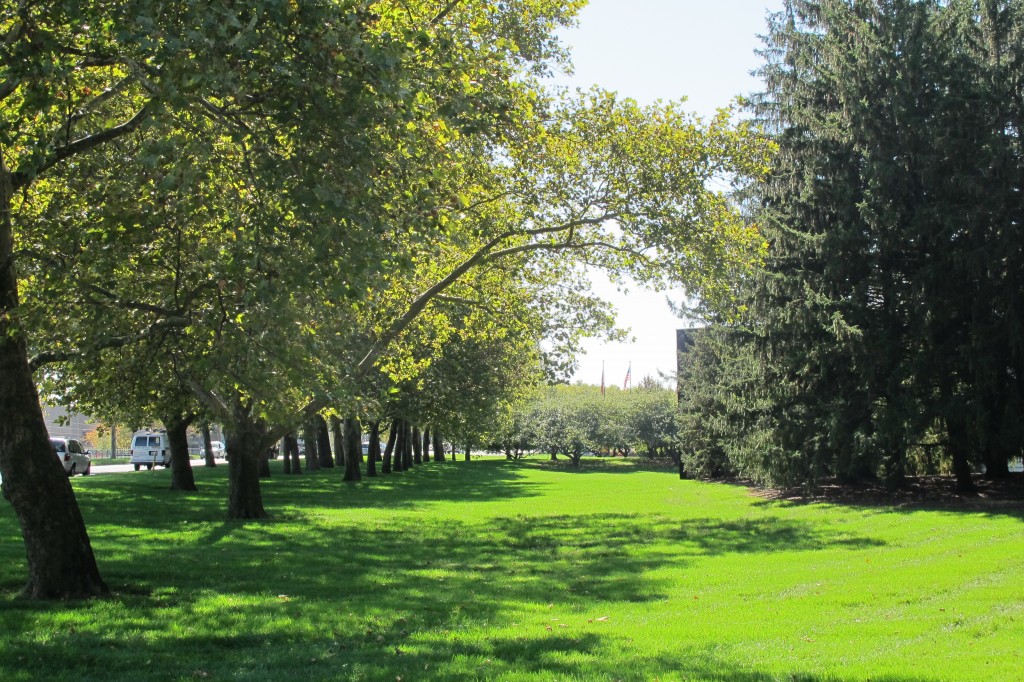 Landscaping along busy Central Avenue
Landscaping along busy Central Avenue
(photo by Ricky Berkey)
 Dan Kiley allee
Dan Kiley allee
(photo by Ricky Berkey)
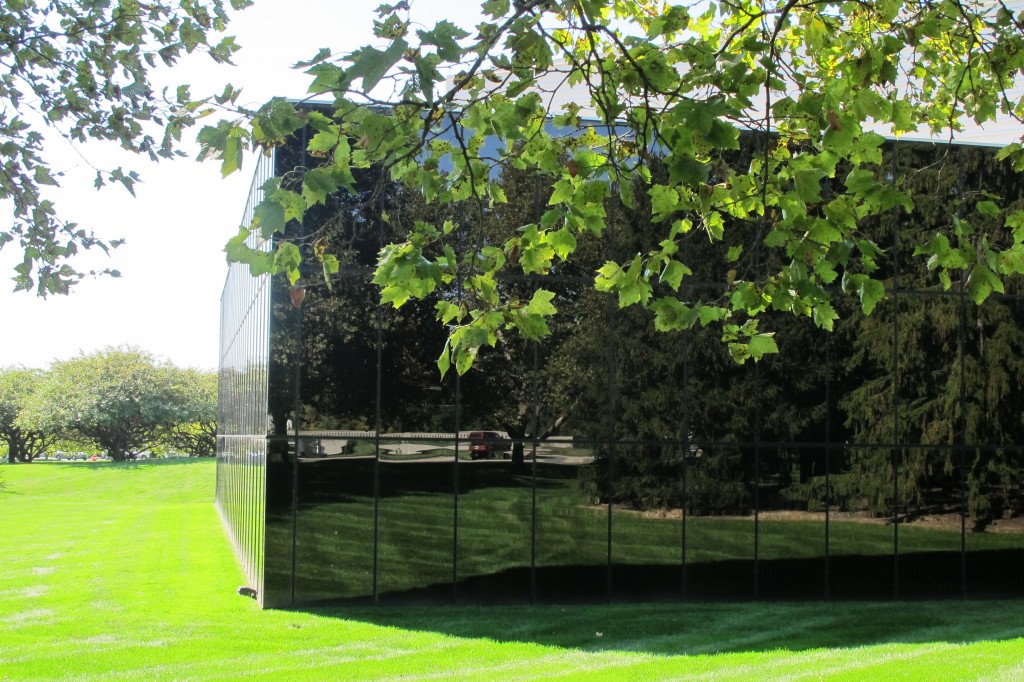 Dark glass on side facing Central avenue (clear view from interior during the day, exterior views open up in the evening)
Dark glass on side facing Central avenue (clear view from interior during the day, exterior views open up in the evening)
(photo by Ricky Berkey)
 Building along Central Avenue
Building along Central Avenue
(photo by Ricky Berkey)
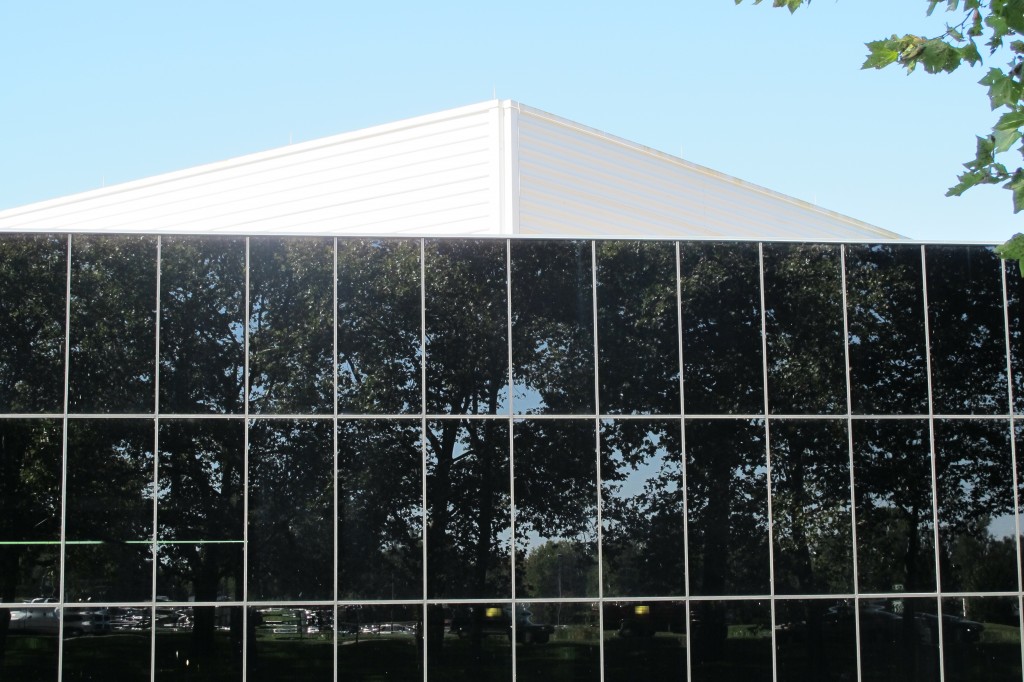 Black curtain wall showing bisecting roofline
Black curtain wall showing bisecting roofline
(photo by Ricky Berkey)
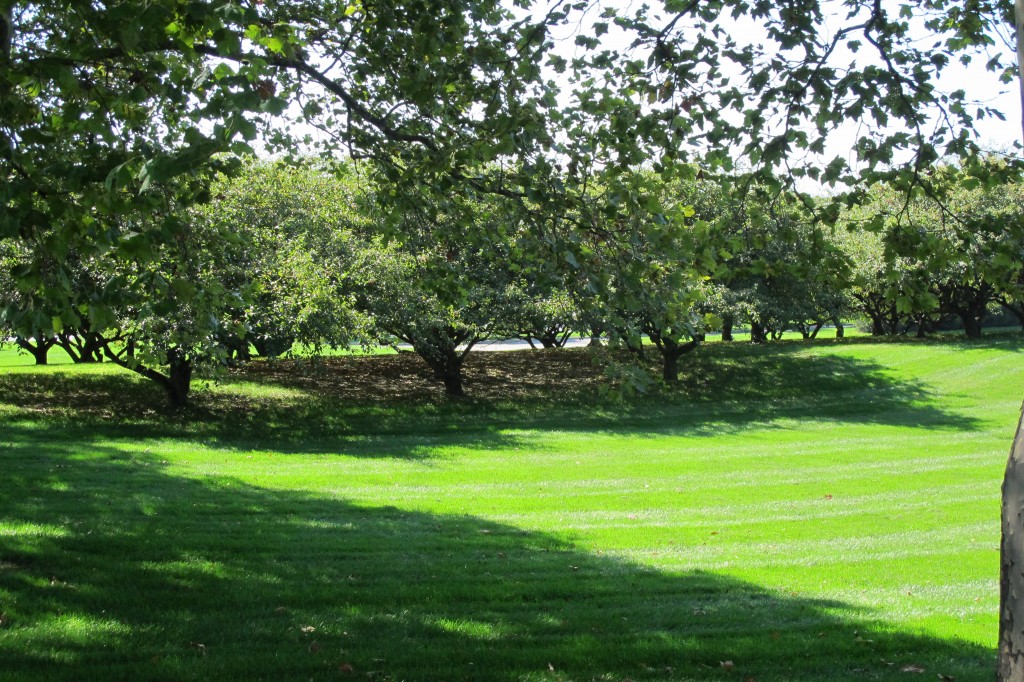 Landscaping between COHA and Cummins Main Engine Plant
Landscaping between COHA and Cummins Main Engine Plant
(photo by Ricky Berkey)
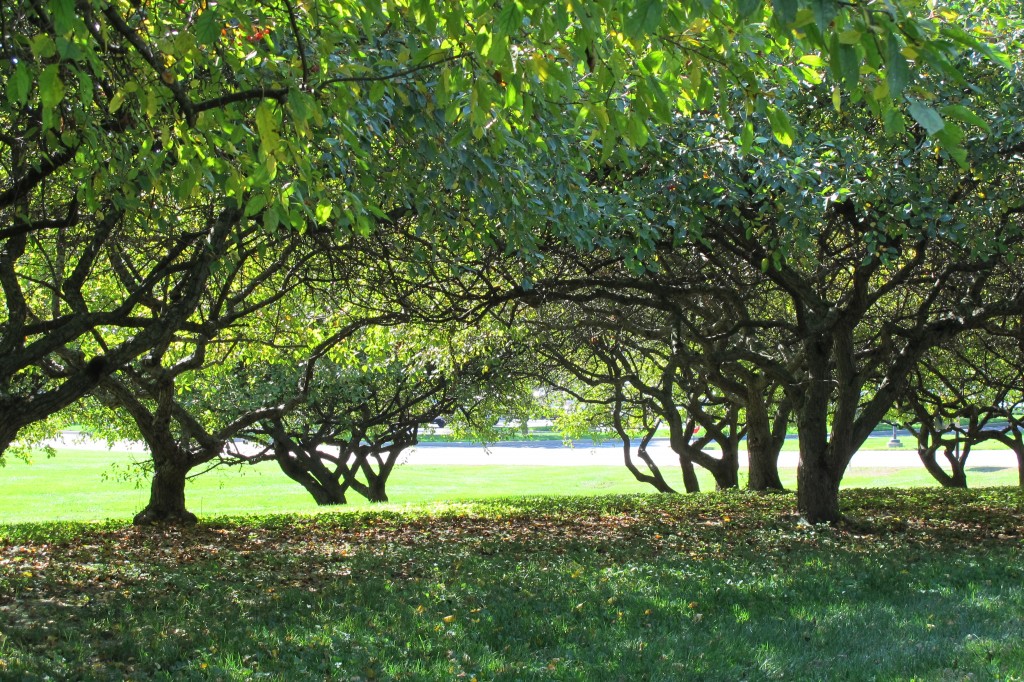 Landscaping and earth berm between COHA and Cummins Main Engine Plant
Landscaping and earth berm between COHA and Cummins Main Engine Plant
(photo by Ricky Berkey)
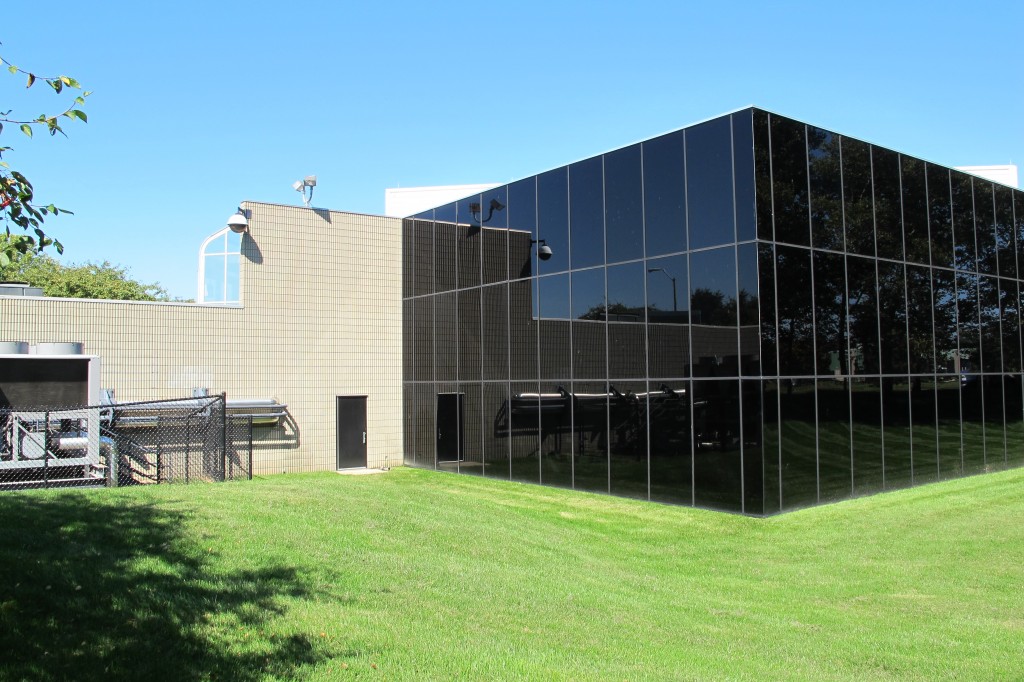 Back corner of building
Back corner of building
(photo by Ricky Berkey)
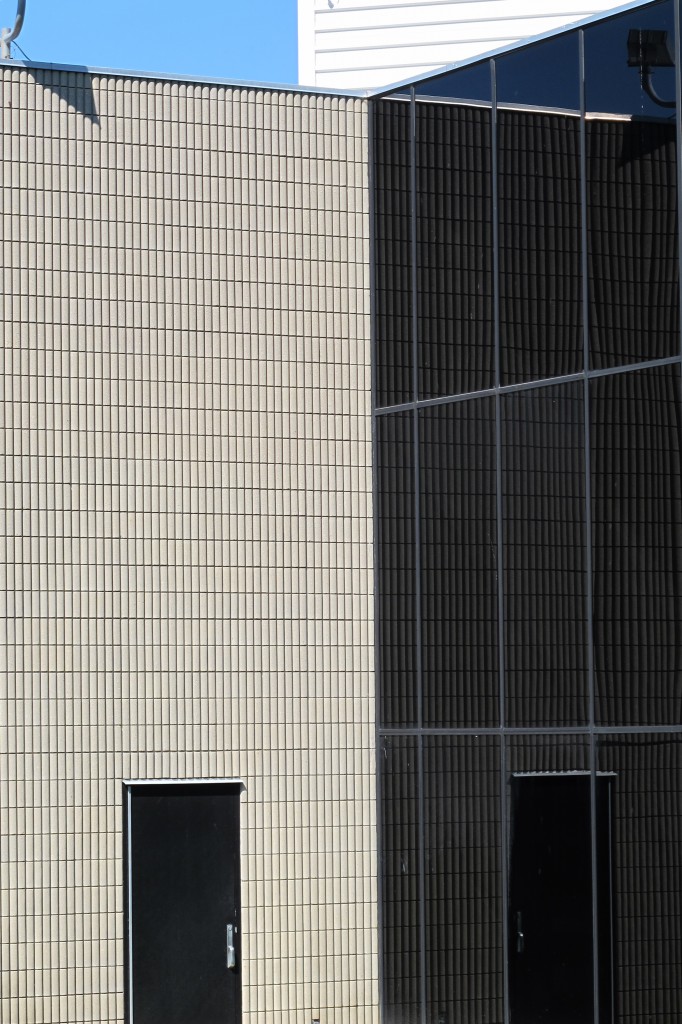 Closeup of back corner of building
Closeup of back corner of building
(photo by Ricky Berkey)
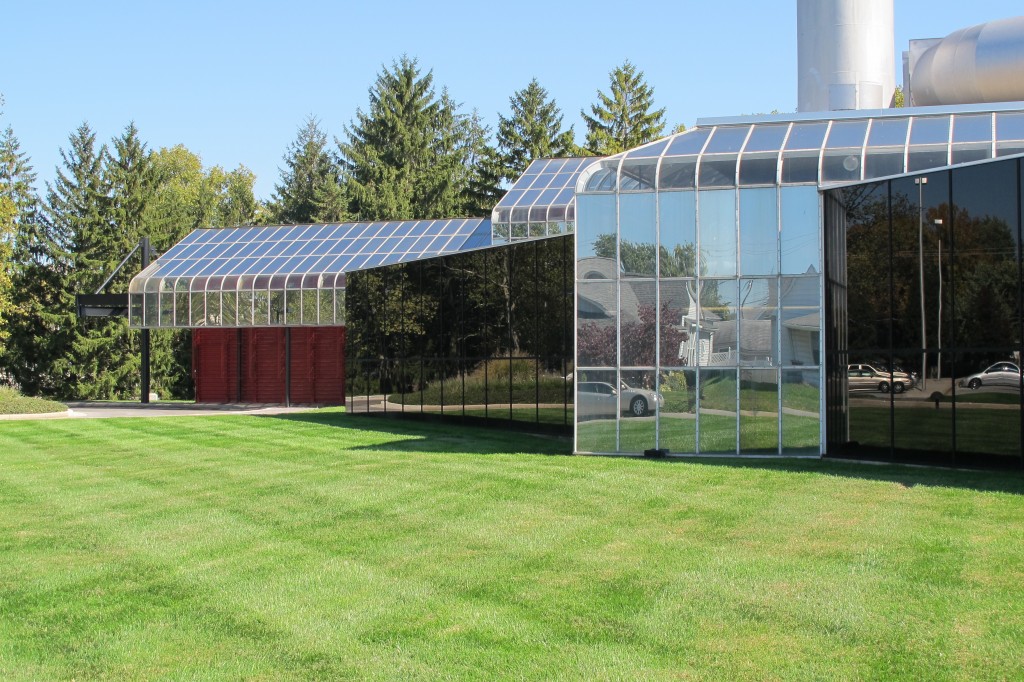 Right front of building (note the several types of glazing materials)
Right front of building (note the several types of glazing materials)
(photo by Ricky Berkey)
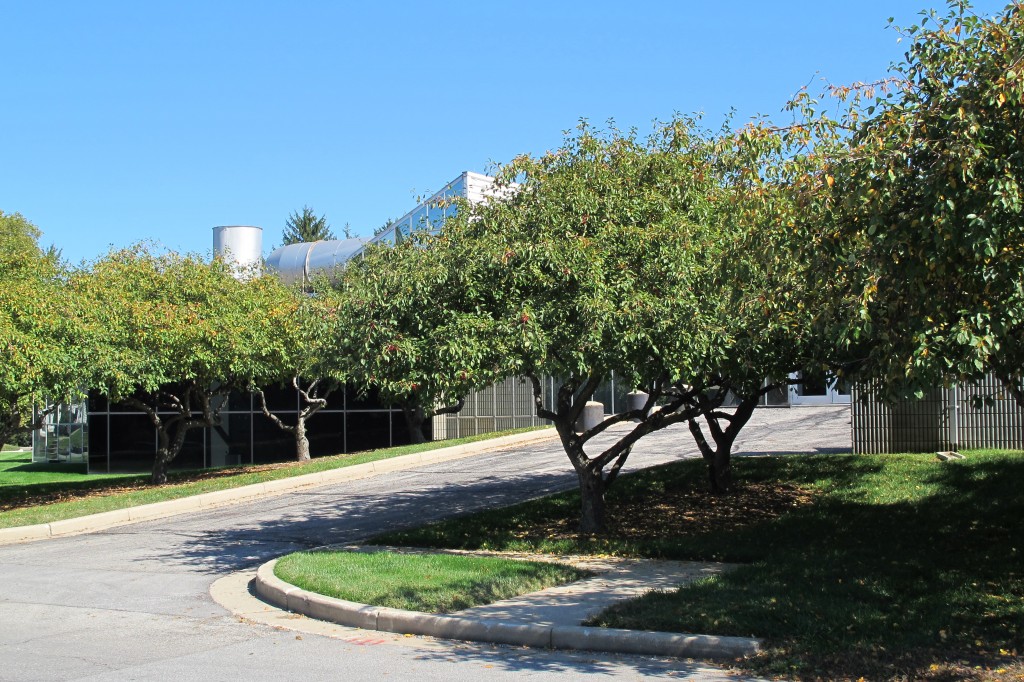 Right front corner
Right front corner
(photo by Ricky Berkey)
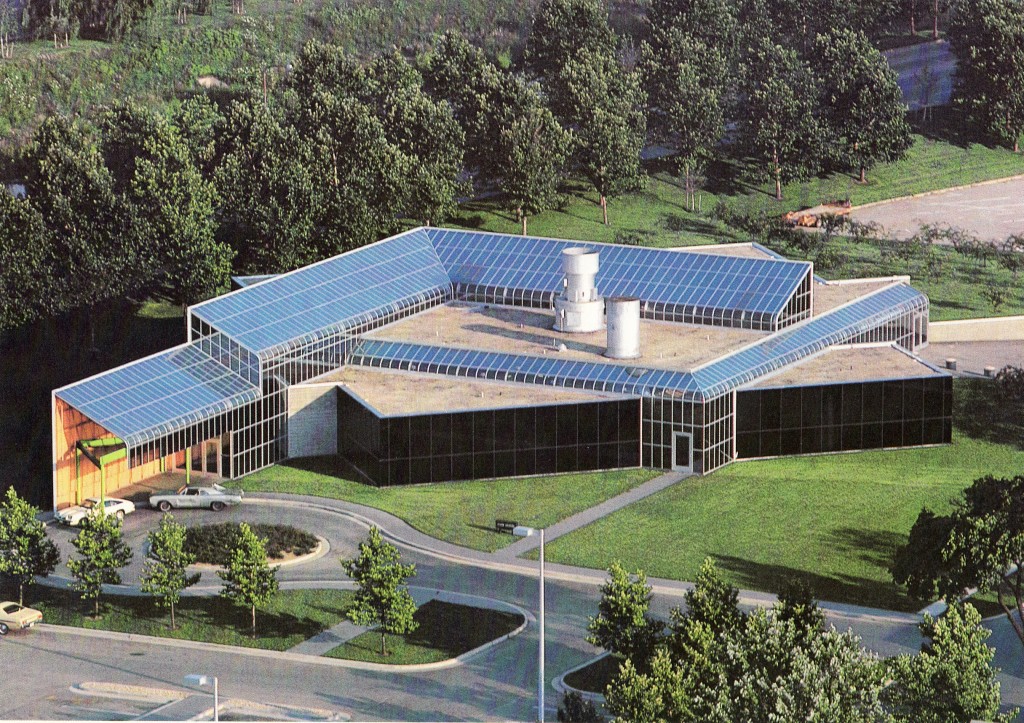 Aerial view from the 70’s
Aerial view from the 70’s
(photo used pending permission)
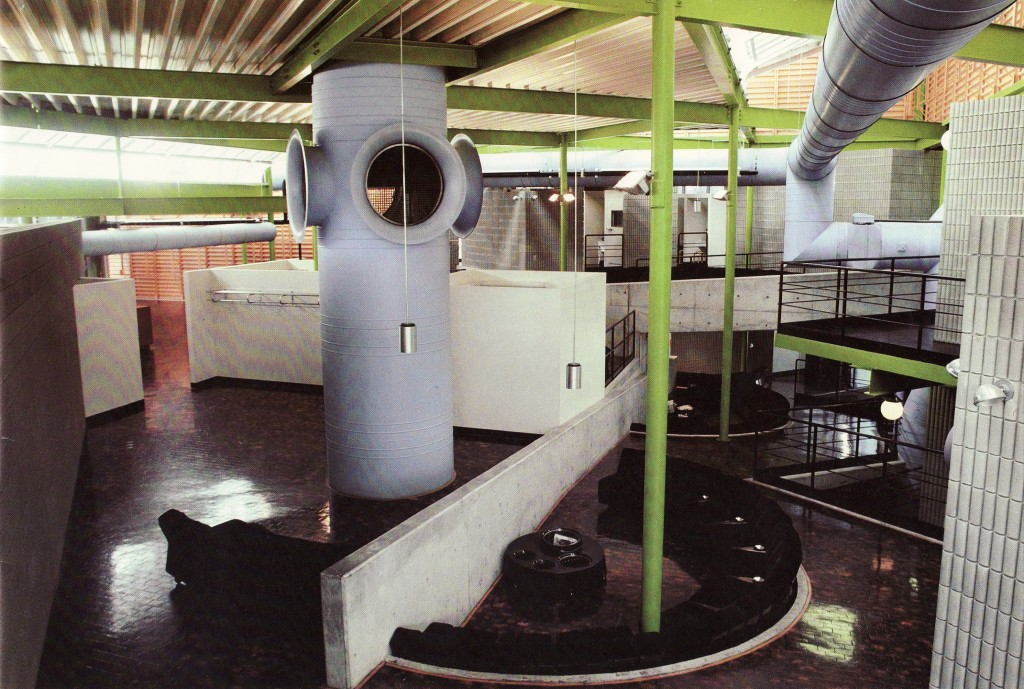 Interior view from the 70’s
Interior view from the 70’s
(photo used pending permission)
 Layout of building
Layout of building
(photo used pending permission)
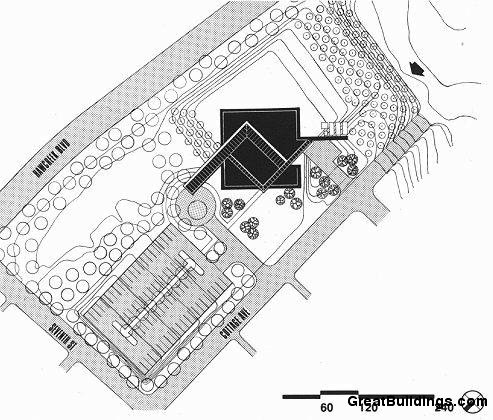 Site plan
Site plan
(photo used pending permission)
 Interior after recent renovations
Interior after recent renovations
(photo used pending permission)
The Architects
 Hardy Holzman Pfieffer Associates (HHPA)
Hardy Holzman Pfieffer Associates (HHPA)
Hardy Holzman Pfeiffer Associates (HHPA) was an internationally recognized architectural, planning and interior design firm formed in 1967 by Hugh Hardy, Malcolm Holzman, and Norman Pfeiffer. HHPA was known for using a wider range of materials and architectural styles than their predecessors in the modernist movement. They designed buildings based on their symbolic interpretation of America using industrial prefab components and images of highway culture and pop art including signs, neon and lights. They utilized different styles like a collage colliding forms and superimposing ideas. They used shifted grids and diagonals to break free from the simple rectangular forms of the international style. They strived to produce a more informal, playful and humanistic style of architecture. They are especially known for their design of public buildings. Hardy Holzman Pfieffer maintained ofices in New York and Los Angeles.
Among the honors won by the firm were the Arnold W. Brunner Prize in Architecture awarded by the National Institute of Arts and Letters in 1974 and the AIA Firm Award from the American Institute of Architects in 1981. Their building designs have won numerous awards including the AIA (American Institute of Architects) Honor Award in 1976 for the COHA medical medical building in Columbus, Indiana.
HPFA disbanded in 2004 with the founding partners separating into 3 smaller independent firms: H3 Hardy Collaboration, Holzman Moss Architecture and Pfeiffer Partners.
 Hugh Hardy
Hugh Hardy
- Born in Majorca, Spain in 1932
- Princeton University (BA in Architecture)
- Princeton University (Masters in Fine Arts)
Hugh Hardy was born in Majorca, Spain in 1932 of American parents. Hardy graduated from Princeton University with a Bachelor of Architecture and with a Master of Fine Arts. After college he served a stint with the Navy Engineering Corp. He then worked as the architectural assistant to set designer Jo Mielziner in New York. He founded his own firm in 1962 as Hugh Hardy & Associates. In 1967, he joined with Malcolm Holzman and Norman Pfieffer to form Hardy Holzman Pfieffer Associates (HHPA). In 2004 he split from his longtime partners to form H3 Hardy Collaboration Architecture.
Hardy remains a leading architect best known for his work designing public spaces, theaters, performing arts venues and cultural facilities. He is a Fellow of the American Institute of Architects (AIA) and a member of the American Academy of Arts and Letters. Among honors he has received during his career are the Placemark Award from the Design History Foundation in 2001 and the President’s Award from the New York Chapter of the AIA in 2002. In 2010 he received the Architectural League of New York’s President’s Medal. He has also won the General Services Administration (GSA) Commissioner’s Award for Excellence in Public Architecture.
Hugh Hardy is married to Italian architect Tiziana Hardy and has two children, Sebastian and Penelope.
 Malcolm Holzman
Malcolm Holzman
- Born in Newark, New Jersey in 1940
- Pratt Institute (BA in Architecture)(1963)
Malcolm Holzman was born in Newark, New Jersey in 1940. He received a Bachelor of Architecture from Pratt Institute in 1963. He was one of the co-founders of Hardy Holzman Pfieffer Architects (HHPA) in 1967 with Hugh Hardy and Norman Pfieffer. After the firm disbanded in 2004 he formed Holzman Moss Bottino Architecture (HMBA) in NYC with partner Douglas Moss.
Holzman has designed many important civic and academic structures throughout the United States, especially libraries, museums and performing arts venues. He is known for his pioneering work with Hardy Holzman Pfieffer using creative materials and bold use of colors and textures utilizing rotated grids, diagonals and eclectic sensibilities. He was an early advocate for adaptive reuse of older buildings at a time when his contemporaries were strictly adhering to the tenets of modernism. He was also an early advocate of using green building and sustainable practices to rehabilitate older buildings.
He has held both the Saarinen and Davenport Visiting Professorships at Yale University. He has lectured and held guest professorships at a number of other universities. Holzman is a member of the Interior Design Hall of Fame, the Municipal Art Society and the Architectural League of New York. He has served as a trustee of the Amon Carter Museum and the Pratt Institute. He is a Fellow of the AIA (American Institute of Architects). Holzman has won numerous design awards for his body of work.
 Norman Pfeiffer
Norman Pfeiffer
- Born in Seattle, Washington in 1940
- University of Washington (BA in Architecture)(1964)
- Columbia University – NYC (Masters in Architecture)(1965)
Norman Pfeiffer was born in Seattle in 1940 and received degrees in architecture from the University of Washington in 1964 and Columbia University in 1965. Norman Pfieffer was one of the co-founders of Hardy Holzman Pfieffer Architects (HHPA) in 1967 with Hugh Hardy and Malcolm Holzman. He established the Los Angeles office of HHPA in 1986. In 2004 Hardy Holzman Pfeiffer Associates was dissolved with Norman Pfeiffer taking over the Los Angeles office of HHPA forming Pfeiffer Partners Architects Inc.
His design portfolio includes numerous public buildings and cultural spaces as well as historic renovations and additions. In 1989 he was appointed to the Architectural Commission of the University of Washington. He has served as Visiting Professor of Architectural Design at the University of California at Los Angeles (UCLA). He is a Fellow of the AIA (American Institute of Architects).
Selected Hardy Holzman Pfeiffer Projects
American Film Institute Theater and HQ – Washington D.C. (1973)
Artpark – Lewiston, New York (1974)
Best Products Headquarters – Richmond, Virginia (1979)
Brooklyn Academy of Music Majestic Theater renovation
Brooklyn Children’s Museum – Brooklyn, New York (1977)
Cleveland Public Library (Louis Stokes Wing and garden)
Columbia Public Library
Cooper-Hewitt Museum – NYC (1976)
Cummins Occupational Health Association (COHA) – Columbus, Indiana (1973)
David Saul Smith Union at Bowdoin College
Dillingham Hall at Punahou
Fireman’s Training Center – NYC (1975)
Los Angeles County Museum of Art
Mahaney Center for the Arts and McCullough Student Center at Middlebury College
Mt. Adams Condominiums – Cincinnati, Ohio
Mt. Healthy Elementary School – Columbus, Indiana (1972)
Murchison Performing Arts Center at the University of North Texas
Ohio Exposition and Arts Pavilion – Columbus, Ohio
Orchestra Hall – Minneapolis, Minnesota (1974)
Playhouse in the Park – Cincinnati, Ohio (1963)
Radio City Music Hall renovation
The Salisbury School – Salisbury, Maryland (1972)
San Angelo Museum of Fine Arts
St. Louis Art Museum – St. Louis, Missouri (1977)
Taylor Theater – Lockport, New York (1969)
Virginia Museum of Fine Arts
Links/References
H3 Hardy Collaboration Architecture: Hugh Hardy’s spinoff firm from Hardy Holzman Pfieffer
Pfieffer Partners Architects:Norman Pfieffers spinoff firm from Hardy Holzman Pfieffer
Holzman Moss Bottino Architects: Malcom Holzman’s spinoff firm from Hardy Holzman Pfieffer
City of Columbus: official City of Columbus website
Columbus Indiana Architectural Archives
Columbus Indiana Architecture Digital Archives: A small portion of the Columbus Indiana Architectural Archives available online from the IUPUI digital library
3D Models of Columbus Architecture Executed in Google SketchUp:
The Republic Newspaper – Columbus, Indiana newspaper
Bartholomew County Public Library
Historic Columbus Website – David Sechrest’s tribute to Columbus History
Historic Columbus Message Board – a companion interactive forum to the David Sechrest historical website
Bartholomew County Historical Society
 Click HERE for a Calendar of Upcoming Events in the Columbus Area.
Click HERE for a Calendar of Upcoming Events in the Columbus Area.
Click HERE for information about Tours of Columbus Architecture and Design including the Miller House.
 Ricky Berkey
Ricky Berkey
Email me: rickyberkey@gmail.com
